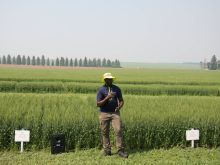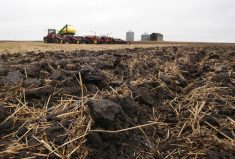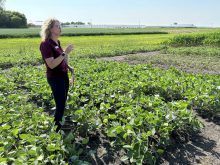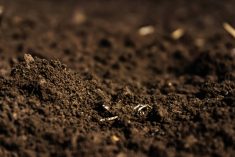Cotton underwear should be the latest tool producers use to measure soil health.
Soil Your Undies, a campaign pushed by the Soil Conservation Council of Canada as part of its 30th annual awareness week April 16-22, encourages Canadians to bury a pair of cotton underwear for two months.
If soil is healthy, with a healthy portion of microbial life, insects, carbon and biological activity, there shouldn’t be much left when the underwear is dug out.
“When you put that underwear in the soil, immediately it triggers a little bit of laughter and so laughter then triggers the memory reflex, so it all ties together so nicely,” Blake Vince of the Innovative Farmers of Ontario said.
Read Also
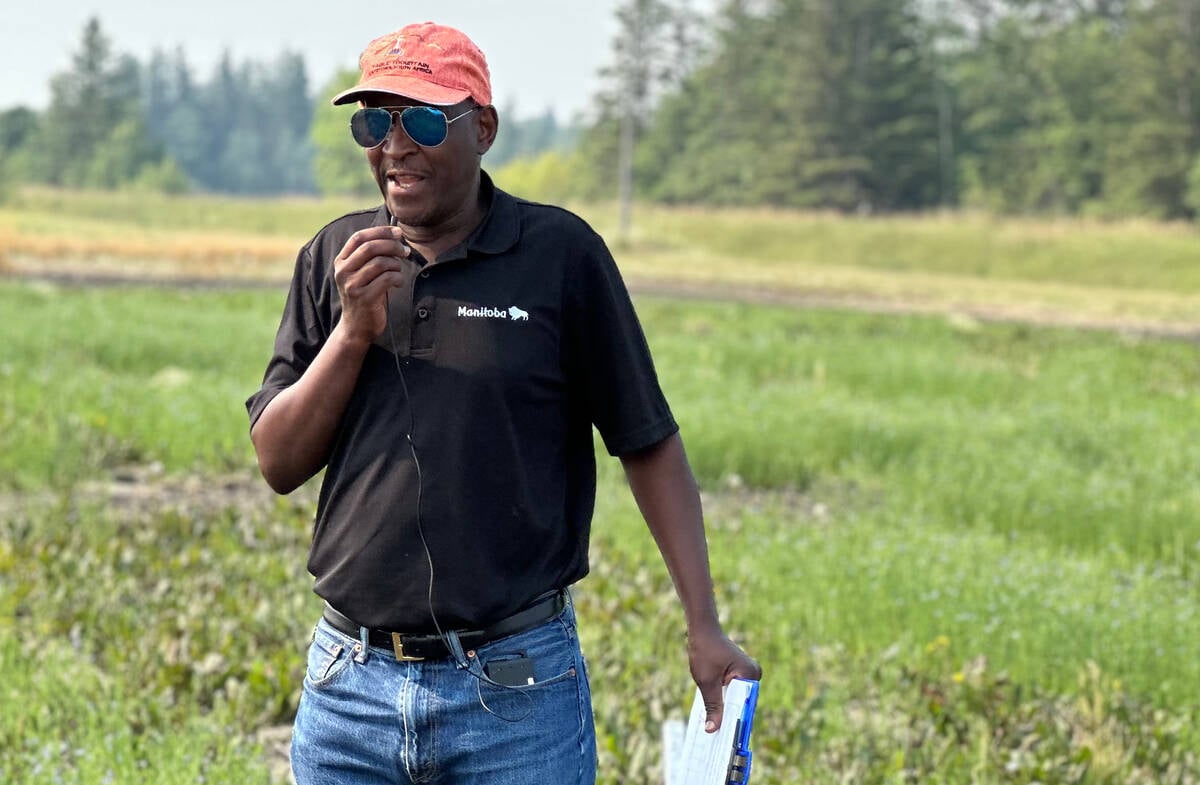
How much nitrogen can farmers really cut?
Manitoba fertilizer trials look for nitrification inhibitor sweet spot, to lower greenhouse gas emissions and cost without hurting yield.
Vince was one of a handful of producers to found the campaign.
The group based the test on previous experiments measuring cotton degradation after being exposed to soils. They soon hit on the idea of burying pure cotton underwear, which is easily available and attention grabbing. The results were a striking visual difference between underwear buried in conventionally tilled fields, with some degradation, and Vince’s own no-till, cover-cropped acres, which reduced the briefs to almost nothing.
The group created the hashtag, #soilyourundies, filmed YouTube videos, and sponsored a contest encouraging producers to bury underwear on their own land. Soon after, the experiment caught the eye of seventh grader Michael Jones, who adopted it for a 4-H science project that eventually won him the 2016 4-H Canada Science Fair.
Cross-country
With the Soil Conservation Council of Canada, the grassroots campaign is about to go national.
“We’re all pretty happy that they’ve picked up on it and they’re willing to take it to another level,” Vince said. “That’s what it’s all about. Across Canada, soil needs to be seen as a non-renewable resource and that we need to do a better job at the farm level of managing soil and realizing that it is the most precious resource that we have as farmers.”
Jim Tokarchuk, Soil Conservation Council of Canada executive director, said the campaign is an effort to branch out to Canadians as a whole.
“You can do that on your farm, in your home garden, in your flower bed, anywhere there’s soil… it’s just a chance for everybody, regardless of where they come from, to do a little bit of an experiment that will tell them about soil health,” he said.
The campaign is the main event of the week. Participants are asked to post the experience to social media with the hashtag #soily ourundies. Highlights will be presented at the Summit on Canadian Soil Health in Guelph, Ont., this summer. Instructions and information on the Soil Your Undies campaign is available on the council’s website, www.soilcc.ca.
“The whole purpose of national soil conservation week is to inform Canadians of the importance of soil health, soil conservation and to remind them that the productivity of our soils is the foundation of our food supplies and that agriculture is a significant contributor to our national economy and that all of that is founded in us maintaining soil health in Canada,” Tokarchuk said. “We traditionally have done a pretty good job with dealing with soil erosion and building organic matter across Canada, but it’s something that requires ongoing diligence.”
According to a 2015 report by the Food and Agriculture Organization (FAO) of the United Nations, soil degradation in the Canadian Prairies decreased from 1991 to 2006 due to a drop in tillage summerfallow, a shift that also reduced salinity risk. Prairie soils at “very-low” or “low” risk of salinity grew 19 per cent between 1981 and 2011, while “high” or “very-high” risk soils declined from 15 to eight per cent. Most of Manitoba rated in the lowest-risk categories, with patches of moderate risk in south-central and southwest Manitoba. Soil organic levels were, likewise, increasing through the ’90s and into 2011 across the Prairies due to farm practice improvements, according to the report.
Still challenges
Michael Thiele, grazing club co-ordinator with the Manitoba Forage and Grassland Association and Ducks Unlimited, welcomed the message of the week.
Past grazing club events have focused on carbon sequestration, cover crops, biodiversity and land reclamation.
Unlike Tokarchuk, however, Thiele was more bleak about the current status of Canadian soil.
“I think this is really the fundamental issue in agriculture and I don’t think we’ll make a lot of progress until we appreciate the significance of the problem, because our soils are degraded,” he said.
The same 2015 report found no increase in soil carbon in much of south-central and southeast Manitoba, although large portions of western Manitoba saw anywhere from 25 to over 90 kilograms more organic carbon per hectare per year. Residual nitrogen levels also put most of southern Manitoba in the red, with over 40 kilograms of residual nitrogen per hectare. Most of southern Manitoba, likewise, rated a “high” or “moderately high” risk of water contamination by excess phosphorus.
Both Tokarchuk and Thiele noted that the conversation around soil health has grown in agricultural circles.
“I think that the interest, certainly, in using soil as a source of carbon sequestration is rising,” Tokarchuk said. “There’s a lot more activity and interest about that in Canada and I think we’re seeing a resurgence at grassroots levels with farmers in making themselves more aware and then actually practising reduced tillage.”




